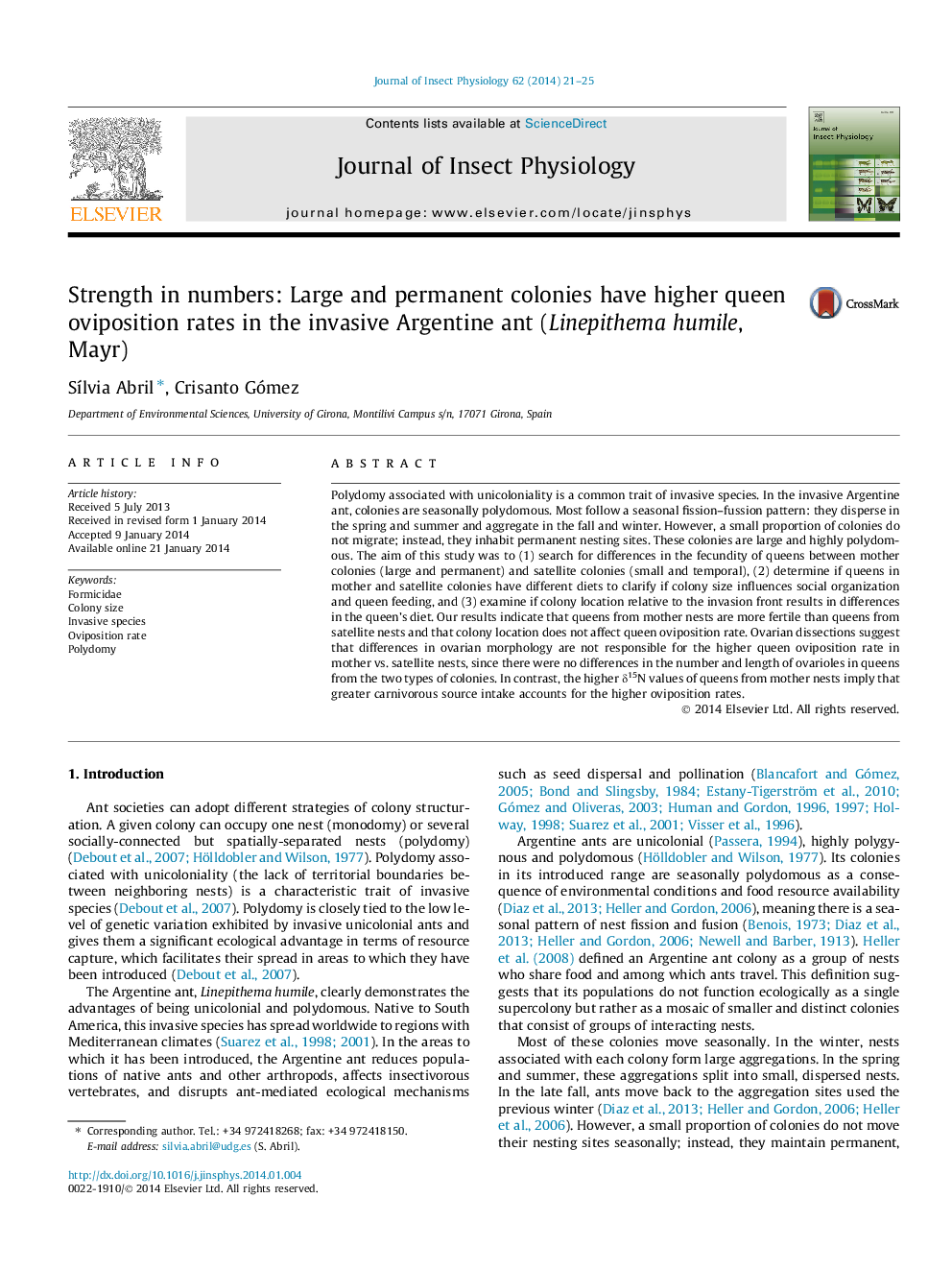| کد مقاله | کد نشریه | سال انتشار | مقاله انگلیسی | نسخه تمام متن |
|---|---|---|---|---|
| 5921691 | 1571008 | 2014 | 5 صفحه PDF | دانلود رایگان |

- In the Argentine ant there are permanent and temporal colonies.
- Queens from permanent colonies exhibit higher oviposition rates and δ15N values.
- The ovarian structure of queens from both kinds of colonies is similar.
- Higher oviposition rates seem to be related with a higher carnivorous diet.
- Colony permanence seems to be the main factor responsible of higher oviposition rates.
Polydomy associated with unicoloniality is a common trait of invasive species. In the invasive Argentine ant, colonies are seasonally polydomous. Most follow a seasonal fission-fussion pattern: they disperse in the spring and summer and aggregate in the fall and winter. However, a small proportion of colonies do not migrate; instead, they inhabit permanent nesting sites. These colonies are large and highly polydomous. The aim of this study was to (1) search for differences in the fecundity of queens between mother colonies (large and permanent) and satellite colonies (small and temporal), (2) determine if queens in mother and satellite colonies have different diets to clarify if colony size influences social organization and queen feeding, and (3) examine if colony location relative to the invasion front results in differences in the queen's diet. Our results indicate that queens from mother nests are more fertile than queens from satellite nests and that colony location does not affect queen oviposition rate. Ovarian dissections suggest that differences in ovarian morphology are not responsible for the higher queen oviposition rate in mother vs. satellite nests, since there were no differences in the number and length of ovarioles in queens from the two types of colonies. In contrast, the higher δ15N values of queens from mother nests imply that greater carnivorous source intake accounts for the higher oviposition rates.
Journal: Journal of Insect Physiology - Volume 62, March 2014, Pages 21-25